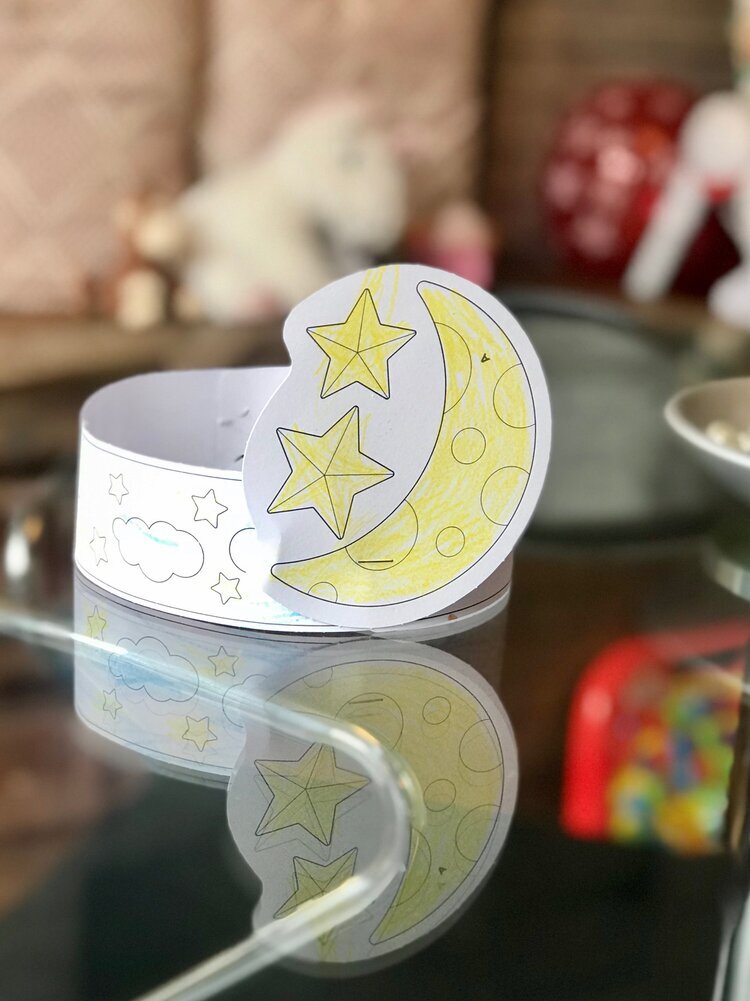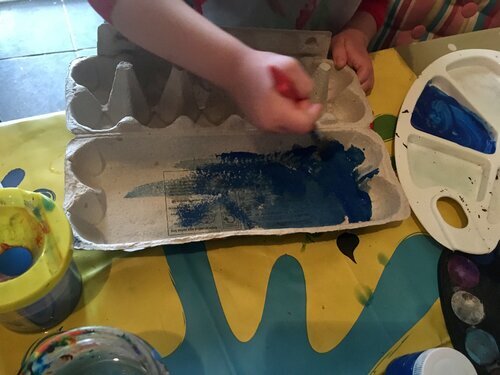Nursery Home Learning - Week Beginning 22.06.20 & 29.06.20
Hello Little Winners and Little Stars, welcome to week two of Under the Sea of home learning. Last week we concentrated on four learning areas; mathematics, literacy, phonics and understanding the world. This week we are going to concentrate on PSED, physical education, communication and language and expressive arts and design. It has been lovely seeing some of you this week in nursery. If you are not coming back to school yet don’t worry we will still give you a call and you can speak to Mrs Pearsall if you want to.
A big thank you to Isabelle for making a very beautiful rainbow fish, we love all of the vibrant colours you used. We also think your egg box sea craft is fantastic. so creative! Thank you Rex, for your creation. We love the hat you made with moon and stars on and what a great idea to wear it at bedtime during a bedtime story! We also really like Thomas and William’s Treasure maps, they look so authentic. Did you find and treasure? We absolutely love your fish craft too, I hope you didn’t make to much of a crafty mess!
Remember if you have a drawing or a photograph of what you have been up to, feel free to send it via the Home Learning Showcase. We love to see what you have been up to.
Also, if you would like to send a message to Little Winners teachers or Little Stars teachers, feel free to do so via the stay in touch section on the nursery home page.
Little Winners & Little Stars – Under the Sea
Suggested tasks for Personal, Social and Emotional Development:
Read The Treasure Hunt, A Percy the Park Keeper Story by Nick Butterworth, or watch the read-aloud version & read The Night Pirates by Peter Harris (Egmont), or watch the read-aloud version or a pirate story of your choice. Explain that the children are going to look at some different treasures…
Egg carton treasure box. Collect some cardboard six-segment egg boxes with lids. Let children paint these with bright colours. Put six different items into each box, one in each segment, for children to discover, place and sort. Use a selection of materials, for example, a wooden brick, ball, feather, stone, small sponge, key, plastic duck, candle, dried flower, chocolate coin. Encourage children to open the egg box and handle each of the six items inside. Talk about different materials, objects, textures, etc. What is each of the items made of? Can they put the items back into the box, one in each segment?
Rowing boats- Ask children to sit opposite a partner and sing ‘Row, row, row your boat’ as they row to and fro. Point out that it will only work if one child is pulling, while the other is pushing. Can they row to Treasure Island and pick up a chest of treasures for the pirates? Where would be a good place to hide the treasure?
Flying rice-Use a snare drum or empty biscuit tin and a pair of drumsticks. Tap the drum. Can the children hear the sound? How does it make a sound? Explain that the drumskin is moving or vibrating. Can the children see the drumskin moving? Place a few grains of dry rice on the drum and tap it again. What did the children see happen? Use a digital camera to capture the rice flying in the air.
Finding fingerprints- Let children look at their fingerprints. Explain that everybody has unique fingerprints and sometimes they are used to identify people. Let children look at their fingerprints using magnifying glasses or a visualiser. Show them how to press their thumb onto an ink pad and then carefully print it onto an ID card. Examine the prints carefully and see if the children can see arches, whorls or loops. Alternatively, press the fingerprints onto a flat balloon. Then blow up the balloon a little so they are enlarged and easier to see. Can they see any fingerprints on the pirates’ treasure? Try pressing fingers onto a clear plastic surface. Dust it with cocoa powder and then brush off any excess. Place a strip of sticky tape on top of the powder and lift off any print. Stick onto a piece of white paper to examine the prints.
What is pollution? Find out about ocean pollution here.
Here are some short videos about Coronavirus Explained! (for kids) and Feeling Better - Worried just in case your little ones maybe still worried in this current climate.
Suggested tasks for Physical Education:
Why don’t you have a go at Cosmic Yoga Under the sea
Do you have any sea creatures toys lying around your home? Can you make an underwater sea tray?
Why not have a go at making a sensory tray
Watch this video Exploring the Coral Reef: Learn about Ocean After watching the video together talk about how different animals move.
Make the most of the good weather and get your paddling pool back out. Pretend to be a mermaid/merboy and get the bubbes out!
Suggested tasks for Commination and Language:
Talk about going to the seaside or a sea life centre. What animals might you see? Would you see any sea creatures? How about seaweed or coral? What other things might you see?
What sounds might you hear at the beach, from animals? Listen and Play - Under the sea
Watch this video about how do fish breathe underwater. Then discuss the following questions. Can sea creatures breathe underwater? Can you breathe underwater?
If you went to the sea what equipment would we need to stay underwater?
Sing a song – A sailor went to sea, sea, sea
Watch this video of the coral reef. Talk about the animals you can see. What are the animals called?
Suggested tasks for Expressive Arts and Design:
Use junk modelling or craft items you have around the house to create a scene. You could even add in natural objects e.g. grass as seaweed.
Make your own ‘Under The Sea’ scene.
Make your own fishing game. Make a fishing rod using a stick or similar (a wooden spoon would work well!). Tie some string on to one end and tie a magnet onto the end of the string (you could use a fridge magnet). Use the rod to explore which items around the house are attracted to the magnet.
Floating and Sinking. Fill up a bowl, sink or basin with water and collect a range of objects. Explore which float and which sink. Can you make predictions and sort the objects?
.Take a look at these wonderful Under The Sea craft ideas: and choose a couple to make.
Well-being:
We would like to share with you these useful websites that have been highlighted by the government to support home learning;
National Literacy Trust Ideas and guidance for fun, simple activities that will engage your children at home, while also benefiting their reading, writing and language development.
Tiny Happy People This website from the BBC helps parents to develop their child's communication skills with lots of information and ideas for activities.
Hungry Little Minds Simple, fun activities for kids, from newborn to five.







